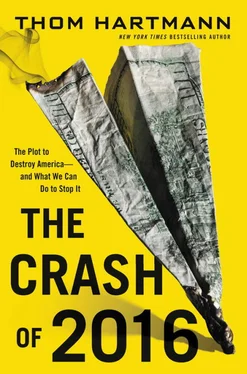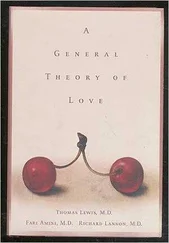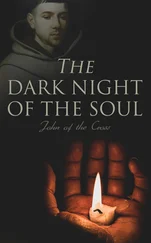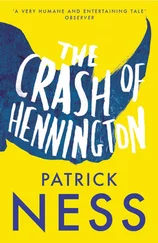And then the crash happened.
“The collapse of 1929 showed up the despotism for what it was,” Roosevelt said. “The election of 1932 was the people’s mandate to end it. Under that mandate it is being ended.”
Echoing warnings Jefferson made a century and a half earlier, Roosevelt argued that America’s survival depended on constant vigilance against the Economic Royalists.
“These economic royalists complain that we seek to overthrow the institutions of America,” he said. “What they really complain of is that we seek to take away their power.
“Our allegiance to American institutions requires the overthrow of this kind of power.”
He told his fellow Democrats at that 1936 Democratic Convention that he was totally committed to the fight.
Just looking at what was happening in Europe, where the Great Crash was fueling political extremism and unholy alliances between corporate power and autocratic government, FDR knew the stakes couldn’t be higher.
“I accept the commission you have tendered me. I join with you. I am enlisted for the duration of the war,” Roosevelt exclaimed.
It would prove to be a war unlike any other the planet had ever seen.
The Road to War: Yesterday and Today
The economic crisis afflicting the world in the 1930s was just the first stage of a cycle that was once again descending on humanity. The next stage is always war.
History tells us that in these times of crisis, the Economic Royalists—the bankers, industrialists, billionaires, kleptocrats, fascists—who know exactly what’s going on and whose ill-gotten gains had caused the Great Crash to begin with, immediately try to exploit the crisis to further enrich themselves.
They demand compensation for their losses, extracting bailouts and enacting austerity measures on working people, squeezing what little wealth there is left in the common economy, thus deepening the economic crisis.
Under calls for privatization, they assault democratic institutions, cutting off vital lifelines and services for working people.
Aware that just as nature abhors a vacuum, power does also, they use words such as “freedom” and “free market” to push for weaker government, or weaker institutions of organized people, thus clearing room for organized money to take power.
FDR summed up their strategy in 1936, saying, “In vain they seek to hide behind the flag and the Constitution. In their blindness they forget what the flag and the Constitution stand for.
“Now, as always, they stand for democracy, not tyranny; for freedom, not subjection; and against a dictatorship by mob rule and the over-privileged alike.”
As the situation for working people deteriorates further, extremist political parties rise up. Desperate populations flock to racist and nationalistic organizations to place blame on someone or something for their economic plight.
America was not spared this extremism, and there were very real moments in the 1930s when it looked like the nation might go too far. But FDR successfully navigated that fine line between far-left and far-right extremist politics that were on the rise across Europe and Asia. Today, it’s often said that in those days of Depression, FDR saved capitalism.
But other nations did succumb.
Like the United States, the German economy had collapsed. After defeat in World War I, a brutal austerity regime under the Treaty of Versailles was imposed on Germany to make the country pay for the damage it had caused all around the continent.
The economist John Maynard Keynes warned of the dangers of austerity at the time, writing, “The treaty includes no provisions for the economic rehabilitation of Europe.” He added, “The danger confronting us… is the rapid depression of the standard of life of the European populations to a point that will mean actual starvation for some.
“Men will not always die quietly. For starvation, which brings to some lethargy and a helpless despair, drives other temperaments to the nervous instability of hysteria and to a mad despair. And these in their distress may overturn the remnants of organisation.”
Speaking directly about Germany, Keynes warned, “Those who sign this treaty will sign the death sentence of many millions of German men, women and children.”
Thus arrived the next stage of the crash: war .
A few months before FDR was sworn in during March 1933, Hitler had been appointed chancellor of Germany. In February of that year, his own forces burned down the Reichstag (the German Parliament building, an act that is comparable to burning the US Capitol), and by blaming it on “communists,” Hitler got the political capital he needed to consolidate power for the Nazis.
During the next few years, concentration camps were built. Japan invaded China. Italy, which had gone fascist, invaded Ethiopia. Later, a civil war in Spain would give rise to fascism there, too—a comingling of state and corporation laced with hyper-militarism and nationalism. And in March 1936, Hitler invaded the Rhineland, breaking the Treaty of Versailles that had ended World War I.
By 1936, as he was running for a second term, FDR knew of the peril on the horizon. He was also aware of the cycles of history. And he made an impassioned appeal to this new generation of Americans coming to power during another time of crisis.
“There is a mysterious cycle in human events,” he said. “To some generations much is given. Of other generations much is expected.
“This generation of Americans has a rendezvous with destiny.”
Today, most of FDR’s generation has died out, and a new generation has a rendezvous with destiny that is just as perilous as the previous one. The 2008 stock market crash that triggered this next Great Crash is in our rearview mirror. But the Royalists are on the march in the United States and abroad.
Royalist technocrats have seen to it that any Royalist losses from the financial crisis are recovered. They’re quietly toppling democratic governments across Europe in Greece, Italy, and Spain, installing Royalist technocrats to oversee harsh austerity measures that cripple working people in order to pay off bankers who made bad investments.
The cycles of history that led to Europe and the rest of the planet breaking into world war eighty years ago are rolling back around today.
In Greece, a modern-day version of the Nazi Party, Golden Dawn, is gaining more popularity among the austerity-ravaged people. In 2009, that party, which embraces Nazi symbolism, racism, and xenophobia, had zero seats in the national parliament. But after three years of austerity, in the 2012 election, Golden Dawn picked up eighteen seats in parliament.
And Golden Dawn is looking to expand its influence, not just in Greece but all around the continent. As the Guardian reported in early 2013, “Greek rightwing extremists have been forging close contacts in Germany in an attempt to strengthen their power base in Europe, according to German officials.”
In 2012, the European Union was awarded the Nobel Peace Prize for its efforts over the last half century in preventing another Continental war. But four generations later, with fascism once again on the march in Europe, it’s becoming increasingly evident that the Nobel Prize committee spoke too soon.
It’s looking more and more like 1936 all over again.
Only this time, in America, we don’t have an FDR with a solid majority in Congress. And just like after the crash of 1857 and subsequent Civil War, the Economic Royalists find themselves in power once again.
The Economic Royalists have gained majorities in Congress and state legislatures all around the nation, crippling millions of people with brutal austerity cuts to social services, with union busting, and with privatization of the commons.
Читать дальше












